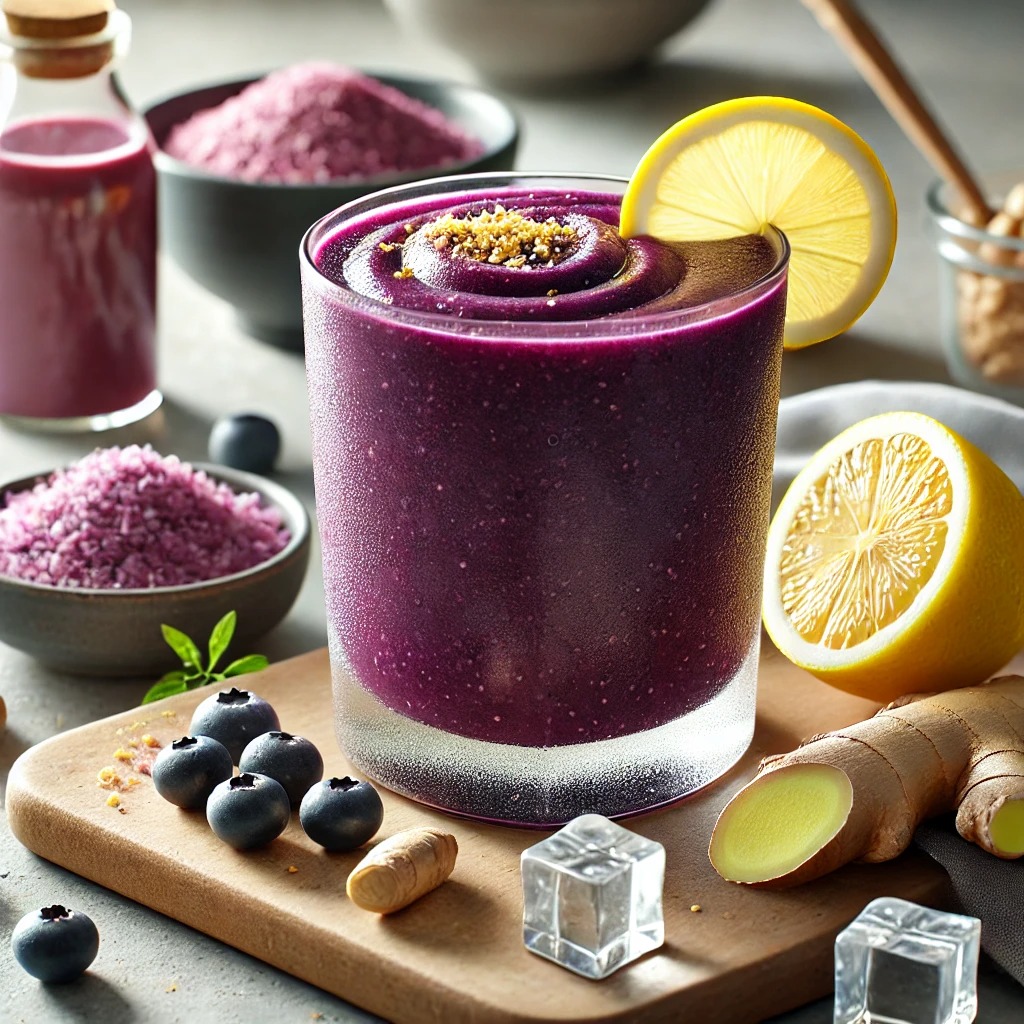Salt Trick Recipe: The Ultimate Guide To Enhancing Your Dishes
Are you looking to take your cooking skills to the next level? Discover the magic of salt trick recipes and transform your dishes into culinary masterpieces. Salt is more than just a seasoning; it’s a secret weapon in the kitchen that can elevate flavors and textures like no other ingredient.
When it comes to cooking, mastering the art of seasoning is crucial. One of the most powerful tools at your disposal is the humble yet mighty salt. Whether you're a seasoned chef or a home cook, understanding how to use salt effectively can make all the difference in your cooking journey.
In this comprehensive guide, we’ll explore the science behind salt trick recipes, provide practical tips, and share delicious recipes that incorporate the magic of salt. Get ready to uncover the secrets that will turn your meals into unforgettable experiences.
Read also:Is There A Grace Period For Expired License In Nc Everything You Need To Know
Table of Contents
- What is the Salt Trick?
- Benefits of Using the Salt Trick
- The Science Behind Salt and Flavor
- Types of Salt for Cooking
- Delicious Salt Trick Recipes
- Proper Storage of Salt
- Salt Substitutes and Alternatives
- Health Considerations with Salt
- Tips for Mastering the Salt Trick
- Frequently Asked Questions About Salt Trick Recipes
What is the Salt Trick?
The salt trick refers to the technique of using salt strategically in cooking to enhance the natural flavors of ingredients. It's not about making food salty but rather about balancing flavors to create a harmonious taste profile. This method involves timing and precision, ensuring that salt is added at the right stages of cooking for maximum impact.
For example, salting pasta water before boiling or seasoning meat before cooking can significantly improve the final dish. The salt trick is a skill that every cook should master to elevate their culinary creations.
How Does the Salt Trick Work?
The salt trick works by altering the perception of taste on our palate. Salt enhances umami flavors, reduces bitterness, and balances sweetness, creating a more complex and satisfying flavor experience. By understanding how salt interacts with other ingredients, you can create dishes that are both delicious and well-balanced.
Benefits of Using the Salt Trick
Using the salt trick in your cooking offers numerous benefits beyond just improving flavor. Here are some key advantages:
- Enhanced Flavor: Salt brings out the natural flavors of ingredients, making dishes more vibrant and exciting.
- Improved Texture: Properly seasoned food often has a better texture, as salt can affect the structure of proteins and vegetables.
- Healthier Meals: By using salt effectively, you can reduce the need for excessive sugar or fat, leading to healthier meals.
- Consistency: Mastering the salt trick ensures consistent results every time you cook, boosting your confidence in the kitchen.
The Science Behind Salt and Flavor
Salt is a unique compound that affects our taste buds in profound ways. It enhances the perception of umami, the savory flavor found in foods like tomatoes, mushrooms, and meat. At the same time, it suppresses bitterness, making it an ideal ingredient for balancing complex flavors.
When salt dissolves in water, it breaks down into sodium and chloride ions. These ions interact with taste receptors on our tongues, amplifying the flavors of other ingredients. This is why a pinch of salt can transform a bland dish into something extraordinary.
Read also:Kawaiisofey Ed Fans A Comprehensive Guide To The Popular Ed Sheeran Fanbase
How Salt Affects Different Ingredients
Salt interacts differently with various ingredients, and understanding these interactions can help you refine your cooking techniques:
- Proteins: Salt draws moisture out of proteins, tightening their structure and improving texture.
- Vegetables: A sprinkle of salt can reduce bitterness in vegetables like kale and broccoli, making them more palatable.
- Carbohydrates: Salt enhances the flavor of bread, pasta, and rice, adding depth to these staples.
Types of Salt for Cooking
Not all salts are created equal. Different types of salt have unique flavors, textures, and uses in the kitchen. Here are some popular varieties:
- Kosher Salt: Coarse and flaky, kosher salt is ideal for seasoning meats and vegetables.
- Sea Salt: Harvested from evaporated seawater, sea salt adds a complex mineral flavor to dishes.
- Table Salt: Fine-grained and iodized, table salt is a versatile option for everyday cooking.
- Himalayan Pink Salt: Known for its rosy hue and subtle mineral notes, this salt is perfect for finishing dishes.
Choosing the Right Salt for Your Recipe
Selecting the appropriate salt depends on the dish you're preparing. For example, use kosher salt for marinades and sea salt for finishing touches. Experiment with different types to discover which ones work best for your recipes.
Delicious Salt Trick Recipes
Now that you understand the importance of the salt trick, it's time to put it into practice. Here are five mouthwatering recipes that showcase the power of salt:
1. Salt-Crusted Baked Potatoes
This recipe uses a generous amount of salt to create a crispy, flavorful crust on baked potatoes.
- Ingredients: Potatoes, coarse salt, olive oil.
- Instructions: Rub potatoes with oil, coat generously with salt, and bake until tender.
2. Salt-and-Pepper Chicken Wings
Simple yet irresistible, these wings get their crunch from a salt-and-pepper seasoning blend.
- Ingredients: Chicken wings, kosher salt, black pepper, flour.
- Instructions: Toss wings in seasoned flour, fry until golden, and serve with your favorite dipping sauce.
Proper Storage of Salt
To maintain the quality of your salt, store it in a cool, dry place away from moisture. Consider using airtight containers to prevent clumping and preserve flavor. Regularly check your salt supply for signs of contamination or expiration.
Tips for Storing Specialty Salts
Specialty salts, such as smoked or flavored varieties, require extra care to retain their unique characteristics. Keep them in separate containers to avoid cross-contamination and label them clearly for easy identification.
Salt Substitutes and Alternatives
For those looking to reduce sodium intake, there are several salt substitutes and alternatives available:
- Herbs and Spices: Use fresh herbs and spices to add flavor without extra salt.
- Lemon Juice: A splash of lemon can brighten dishes and mimic the tanginess of salt.
- Low-Sodium Seasonings: Explore commercially available low-sodium blends for a healthier option.
Health Considerations with Salt
While salt is essential for flavor, excessive consumption can lead to health issues such as high blood pressure and heart disease. It's important to use salt in moderation and be mindful of your overall sodium intake. Consult with a healthcare professional if you have concerns about your salt consumption.
How Much Salt is Too Much?
The American Heart Association recommends no more than 2,300 milligrams of sodium per day, with an ideal limit of 1,500 milligrams for most adults. Monitoring your salt intake can help you maintain a healthy balance.
Tips for Mastering the Salt Trick
Here are some practical tips to help you master the art of the salt trick:
- Taste as You Go: Continuously taste your food while cooking to ensure proper seasoning.
- Season in Layers: Add salt gradually throughout the cooking process for even distribution.
- Experiment with Flavors: Try different types of salt to discover new flavor profiles.
Frequently Asked Questions About Salt Trick Recipes
Q: Can I use any type of salt in my recipes?
A: While most recipes will work with any type of salt, certain salts may provide better results depending on the dish. For example, kosher salt is ideal for seasoning meats, while sea salt is perfect for finishing touches.
Q: How do I know if I've added enough salt?
A: The key is to taste your food regularly while cooking. If the flavors seem flat or dull, a pinch more salt may be needed. Remember, you can always add more, but you can't take it away once it's been added.
Q: Is there a substitute for salt in cooking?
A: Yes, there are several alternatives, including herbs, spices, and citrus juices. However, these substitutes may not provide the same flavor-enhancing properties as salt.
Conclusion
In conclusion, mastering the salt trick is essential for anyone looking to elevate their cooking skills. By understanding the science behind salt and flavor, selecting the right type of salt, and practicing proper seasoning techniques, you can create dishes that are both delicious and satisfying.
We encourage you to try the recipes and tips shared in this guide and share your experiences with us in the comments below. Don't forget to explore our other articles for more culinary inspiration and stay tuned for new content. Happy cooking!
Article Recommendations


